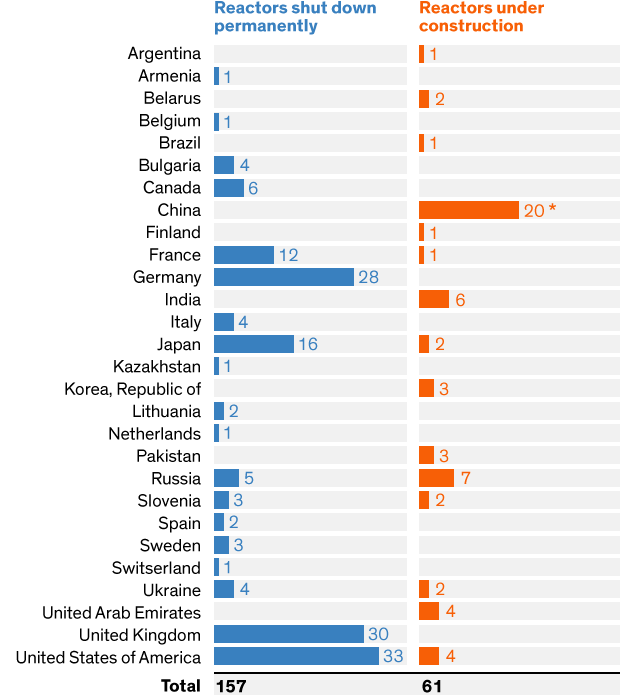kristopher
kristopher's JournalToyota acknowledges reality: Moving into the lithium EV business with series hybrid plug in.
...While rivals including Tesla Motors and Nissan Motor Co began adopting lithium-ion battery technology nearly a decade ago, Toyota has largely held back due to concerns over cost, size and safety.
...Having Toyota endorse lithium-ion will be a fillip for the developing technology, and gives the automaker the option to produce for an all-electric passenger car market which it has avoided, preferring to put its heft behind hydrogen fuel-cell vehicles (FCVs).
Toyota says its Prius Prime, a soon-to-be-launched plug-in electric version of the world's top-selling gasoline hybrid, will use lithium-ion batteries, with enough energy to make the car go around 60 kms (37.3 miles) when fully charged before the gasoline engine kicks in. Because of different methodology in measuring a car's electric mode range, the Prime's 60 km range will be listed in the United States as around 25 miles (40.2 kms).
<snip>
While Toyota sees FCVs as the ultimate 'green' car, the United States and China are encouraging automakers to make more all-electric battery cars as they push alternative energy strategies.
more at: http://www.reuters.com/article/us-toyota-batteries-idUSKBN12U0ZH
Fatal Measles Complication Killed Patients Years Later
by MAGGIE FOX
A deadly measles complication that kills kids years after they seemingly recover may not be as rare as doctors thought, researchers said Friday.
...
They say they're afraid the condition is far more common than anyone thought, and say it strongly reinforces the need for vaccinating every single child who can be.
...
The victims all had a condition called subacute sclerosing panencephalitis or SSPE. It's caused when the measles virus stays in the brain, usually for years, after a young child is infected and has recovered.
Once thought very rare, a recent study in Germany and now the California study suggest SSPE is far more common than previously believed. Original estimates suggested it affected 1 in 100,000 kids, but in the California cases 1 in 600 people who got measles as infants developed SSPE, the researchers said....
More at: http://www.nbcnews.com/health/health-news/fatal-measles-complication-killed-patients-years-later-n674706
Daaammn!
"Too Cheap to Meter” Nuclear Power Revisited
After 50 years of operation, nuclear electric generation is still having teething pains
By Vaclav Smil
Posted 26 Sep 2016
Illustration: Chad Hagen
The age of commercial nuclear electricity generation began on 17 October 1956, when Queen Elizabeth II switched on Calder Hall, on the Cumberland coast of England. Sixty years is long enough to judge the technology, and I still cannot improve on my evaluation from about 10 years ago: a “successful failure.”
The success part is well documented. After a slow start, reactor construction began to accelerate during the late 1960s, and by 1977 more than 10 percent of U.S. electricity came from fission, rising to 20 percent by 1991. That was a faster penetration of the market than photovoltaics and wind turbines have managed since the 1990s.
Today the world has 448 reactors, many with capacity factors of better than 90 percent. That’s the share of the reactors’ potential output that they averaged year-round, producing more than twice as much electricity as PV cells and wind turbines combined. Nuclear power provided the highest share of electricity in France (77 percent), but Swiss reactors contributed 38 percent and South Korea got 30 percent, as did Japan before Fukushima. The U.S. share remains at almost 20 percent.
From Those Who Have, It Shall Be Taken Away
Source: International Atomic Energy Agency*Two of the reactors under construction are in Taiwan.
The failure part has to do with unmet expectations. The claim that nuclear electricity would be “too cheap to meter” is not apocryphal: That’s what Lewis L. Strauss, chairman of the U.S. Atomic Energy Commission in 1954, told the National Association of Science Writers in New York in September of that year. And equally audacious claims were still to come. In 1971, Glenn Seaborg, a Nobelist and chairman of the Atomic Energy Commission then, predicted that nuclear reactors would generate nearly all the world’s electricity by 2000. Seaborg envisioned giant coastal “nuplexes” desalinating sea water, geostationary satellites powered by compact nuclear reactors for broadcasting TV programs, nuclear-powered tankers, and nuclear explosives that would alter the flow of rivers and excavate underground cities. Meanwhile, nuclear propulsion would carry men to Mars.
The project to generate electricity from fission stalled during the 1980s, as demand for electricity in affluent economies fell and problems with nuclear power plants multiplied...
If Germany Bans Internal Combustion Engines, It'll Change the Game
By Andrew Silver
Posted 19 Oct 2016 | 20:00 GMT
A recently proposed ban on internal combustion engines could improve air quality and lower noise pollution and CO2 emissions in Germany.
“We do not expect it will become a law within the next 12 months,” writes Volker Quaschning, an energy researcher at the Hochschule für Technik und Wirtschaft (HTW) Berlin, in Germany, in an email. “However, the discussion is interesting…because it increases the pressure on the car industry.”
Echoing similar proposals in Norway and other countries, the heads of 13 out of 16 of Germany’s states voted two weeks ago to allow sales of only zero-emission cars starting in 2030. That would be no small matter, considering that Germany—home of BMW, Mercedes-Benz, and Volkswagen—had 44 million registered cars in 2013.
The states alone are not able to put the ban into effect; only the German federal government can. But they have started a conversation, and researchers say there would be clear benefits.
First, Quaschning calculated that ...
Interesting read.
Have We Already Won the Renewables Revolution?
Tam Hunt looks at the clear—and not-so-clear—trajectories for renewables, efficiency and electric vehicles.
Could we have already reached a point where current trajectories for renewable energy, energy efficiency and alternative transportation are clear enough that we can reasonably suggest that a revolution has occurred?
Yes. For the most part, the game is indeed won. We are on the path to renewable energy ubiquity -- and it’s unlikely to be derailed even if policy support falters for these technologies.
There are still some uncertainties, but let’s start by examining the clearer trajectories.
Renewable energy is trending rapidly toward ubiquity
<snip 6 para>
Source: REN21 Global Status Report 2016
The world is inevitably becoming more energy-efficient
<snip 3 para>
FIGURE 2: EIA’s Energy Intensity Projections
Electric car adoption is growing rapidly, but still not trending toward ubiquity
<snip 1 para>
A recent Goldman Sachs report estimates that about 50 percent of all new car sales will be EVs by 2025. Under this trend, we’ll see almost all new cars become electric by around 2030. With an average vehicle lifetime of 10 to 15 years, it is possible that our entire passenger car fleet will become electric by around 2045 or so. This is encouraging.
FIGURE 3: EV, Solar and LED Sales Estimates for 2025
https://dqbasmyouzti2.cloudfront.net/content/images/articles/Goldman_Sachs_solar,_EV_and_LEDs.png
Source: Goldman Sachs
<snip 6 para>
FIGURE 4: Battery Energy Density and Costs, Historical and Targeted
Source: IEA Global EV Outlook 2016
<snip 3 para>
What could derail the revolution?
<snip 8 para wrap up>
Re: Coal ash hexavalent chromium drinking water contamination in VA & NC
This summer a study out of Duke University prompted this reporting:
Upper James Riverkeeper: Duke Study Shows Coal Ash Ponds Leak Contaminants
Thursday, 23 June 2016 12:40
http://www.waterkeeperschesapeake.com/about-us/resources/item/189-duke-study-shows-coal-ash-ponds-leak-contaminants
Duke University tests find leaching from ash sites, including two in Va.
http://www.roanoke.com/news/duke-university-tests-find-leaching-from-ash-sites-including-two/article_c54467cb-7e6a-523e-8cdf-fd9fde181c45.html
Now, a follow up study brings news even more dire.
October 26, 2016 10:45 pm
By ROBERT ZULLO Richmond Times-Dispatch
At the Virginia City Hybrid Energy Center, land is graded and prepared at the landfill where by-products of coal combustion (coal ash) will be deposited. August 31, 2016.
Hexavalent chromium contamination of hundreds of private drinking-water wells near Duke Energy coal ash facilities ...
... into the middle of that roiling feud fell a bombshell Wednesday, when a study released by a team of Duke University-led researchers concluded that the potentially carcinogenic metal that was found in 90 percent of the 376 North Carolina wells sampled is naturally occurring....
Vengosh’s team has developed a testing method that uses distinctive isotope tracers of boron and strontium associated with coal ash to link contamination to the unlined ponds where the waste has been stored for decades. The technique was the basis of a report Vengosh and his team published this past summer that found leaking coal ash ponds at 21 facilities in five states...
<snip>
“Overall, the geochemical and isotopic data clearly indicate that the drinking-water wells tested in this study are not impacted by CCR (coal combustion residuals) effluents and therefore the coal ash ponds are not a likely source” of the elevated chromium levels, says the study, published in Environmental Science and Technology Letters.
Far from being a cause for celebration, though, Vengosh said the report demonstrates that hexavalent chromium contamination, albeit naturally occurring, is more widespread in the Piedmont region — which covers a swath that runs from southeastern Pennsylvania, through central Virginia and North Carolina and into South Carolina, northern Georgia and eastern Alabama — than previously realized.
“If anything, because the contamination stems from water-rock interactions that are common across the Piedmont region, people in a much larger geographic area may be at risk. This is not limited only to wells near coal ash ponds,” Vengosh said....
More at: http://www.richmond.com/news/article_2af6db34-0f85-5410-b4c3-3a17689d9261.html
See also: National Institute of Health's National Toxicity Program
Hexavalent Chromium
https://www.niehs.nih.gov/health/materials/hexavalent_chromium_508.pdf
Researchers Clear 'Patient Zero' From AIDS Origin Story
Preview of paper in journal Nature: http://www.nature.com/nature/journal/vaop/ncurrent/full/nature19827.html
Full article available for reading courtesy of tie-up with NPR: http://www.nature.com/articles/nature19827.epdf?referrer_access_token=YQSN9k7bdqlfR75Kv3N479RgN0jAjWel9jnR3ZoTv0Mz5UkminhxQD8O3RqOtslwjkcYE9TPU1NVJFd01fF8JOumsmY-aQQFmpiDkzJ_fkWaaZ2RwXWYFIlvT_yH_M2xj9J-mQ_-aQ0pxMuatLUfwvunbhSkdkbPThxWuHGybfwP4nA7stdESTvHM4fgsQCcvVvclqeuzM21euZwPeIWCbmOuRs5AoUFu2gyt0ACT2KEDnalRwYUOYQ5xAG9e5M1HNVs58nsH9JV5Kr1HXxNHA%3D%3D&tracking_referrer=www.npr.org
doi:10.1038/nature19827
1970s and ‘Patient 0’
HIV-1 genomes illuminate early HIV/AIDS history in North America
Michael Worobey1, Thomas D. Watts1, Richard A. McKay2, Marc A. Suchard3, Timothy Granade4, Dirk E. Teuwen5, Beryl A. Koblin6, Walid Heneine4, Philippe Lemey7 & Harold W. Jaffe4
The emergence of HIV-1 group M subtype B in North American men who have sex with men was a key turning point in the HIV/AIDS pandemic. Phylogenetic studies have suggested cryptic subtype B circulation in the United States (US) throughout the 1970s1,2 and an even older presence in the Caribbean2. However, these temporal and geographical inferences, based upon partial HIV-1 genomes that postdate the recognition of AIDS in 1981, remain contentious3,4 and the earliest movements of the virus within the US are unknown. We serologically screened >2,000 1970s serum samples and developed a highly sensitive approach for recovering viral RNA from degraded archival samples. Here, we report eight coding-complete genomes from US serum samples from 1978–1979—eight of the nine oldest HIV-1 group M genomes to date. This early, full-genome ‘snapshot’ reveals that the US HIV-1 epidemic exhibited extensive genetic diversity in the 1970s but also provides strong evidence for its emergence from a pre-existing Caribbean epidemic. Bayesian phylogenetic analyses estimate the jump to the US at around 1970 and place the ancestral US virus in New York City with 0.99 posterior probability support, strongly suggesting this was the crucial hub of early US HIV/AIDS diversification. Logistic growth coalescent models reveal epidemic doubling times of 0.86 and 1.12 years for the US and Caribbean, respectively, suggesting rapid early expansion in each location3. Comparisons with more recent data reveal many of these insights to be unattainable without archival, full-genome sequences. We also recovered the HIV-1 genome from the individual known as ‘Patient 0’ (ref. 5) and found neither biological nor historical evidence that he was the primary case in the US or for subtype B as a whole. We discuss the genesis and persistence of this belief in the light of these evolutionary insights.
The NPR write up: Researchers Clear 'Patient Zero' From AIDS Origin Story
October 26, 20161:02 PM ET
Michaeleen Doucleff
http://www.npr.org/sections/health-shots/2016/10/26/498876985/mystery-solved-how-hiv-came-to-the-u-s
Americans strongly favor expanding solar power to help address costs and environmental concerns
BY BRIAN KENNEDY
OCTOBER 5, 2016
As the solar energy industry gears up to add more electricity-generating capacity than any other source this year, a new Pew Research Center survey finds that almost nine-in-ten U.S. adults (89%) favor expanding use of solar power, while only 9% oppose it. That sentiment bridges the partisan divide, with large majorities from across the political spectrum favoring more use of this alternative source.
Planned large-scale solar farms are expected to add 9.5 gigawatts of electricity-generating capacity, according to the U.S. Energy Information Administration (EIA), a government agency that collects and analyzes information about the energy industry. Natural gas is expected to add 8 gigawatts and wind 6.8 gigawatts. And that figure for solar doesn’t count electricity-generating capacity from distributed solar, such as rooftop panels. (In 2015, distributed solar added nearly 2 gigawatts of capacity.)
To put all this in context, the total in-service electricity-generating capacity in the U.S. was about 1,070 gigawatts as of July 2016.
Some Americans have already installed or are exploring solar power at home too. The Pew Research Center report finds 4% of homeowners have home solar panels. Many more homeowners – 40% – say that in the past year they have given serious thought to adding them.
Western homeowners...



http://www.pewresearch.org/fact-tank/2016/10/05/americans-strongly-favor-expanding-solar-power-to-help-address-costs-and-environmental-concerns/
MIT - New library proposals meant to enhance “meaningful access to knowledge.”
New library proposals meant to enhance “meaningful access to knowledge.”
Peter Dizikes | MIT News Office
October 24, 2016
An MIT task force is releasing a preliminary report featuring a set of proposals aimed at steering MIT’s library system toward becoming an “open global platform” enabling the “discovery, use, and stewardship of information and knowledge” for future generations.
The report, based on a year of work since the formation of the task force, contains general recommendations intended to develop “a global library for a global university,” while strengthening the library system’s relationship with the local academic community and public sphere.
“For the MIT Libraries, the better world we seek is one in which there is abundant, equitable, meaningful access to knowledge and to the products of the full life cycle of research,” the report states. “Enduring global access to knowledge requires sustainable models for ensuring that past and present knowledge are available long into the future.”
The task force is continuing to consult widely with the broader MIT community to refine its proposals. The preliminary report is intended to continue that dialogue, and to elicit additional input on the vision and recommendations it contains.
“The task force spent significant time ...
UPS truck w/ 2-cylinder range extender engine feeding lithium batteries = 4X MPG
by Andy Szal
The parcel giant announced that the trucks will be deployed, beginning in January, in Alabama, Arizona, Georgia, Florida, Mississippi, Nevada, Texas and potentially additional states.
UPS previously announced the purchase of 125 of the 2-cylinder engine, E-GENTM chassis trucks, manufactured by Workhorse Group, earlier this year.
"We are committed to developing alternative fuel vehicles that lessen our impact on the environment and reliance on petroleum based fuels," said senior vice president for global engineering and sustainability Mark Wallace. "That effort is helping to transform markets and communities."
?itok=LVDKu7ja
(Image credit: UPS)
The trucks, which are powered with help from lithium ion batteries and range extender engines, boast about four times the fuel economy of a conventional truck....
It seems there is another billion dollar battery factory in the works - this one for "solid-state batteries".
<snip>
Dyson planned to invest $1 billion in a new battery plant in the wake of its $90 million purchase of Sakti3, an Ann Arbor-based company that developed new solid-state battery technology.
Solid-state batteries, unlike conventional lithium-ion batteries, will not overheat and do not require expensive fire safety features. They could also last far longer and charge in a matter of minutes.
<snip>
Although the new batteries are likely at least 10 years removed from hitting showrooms, experts believe they could eventually prove decisive to the widespread adoption of electric vehicles. Numerous other automakers, suppliers and tech companies are also working on similar technology.
One expert, however, predicted that Dyson could eventually challenge Tesla Motors, whose forthcoming mass-market electric vehicle is expected to exceed 215 miles of range on a single charge. A solid-state battery could extend that range to 350 miles....
Profile Information
Member since: Fri Dec 19, 2003, 02:20 AMNumber of posts: 29,798





